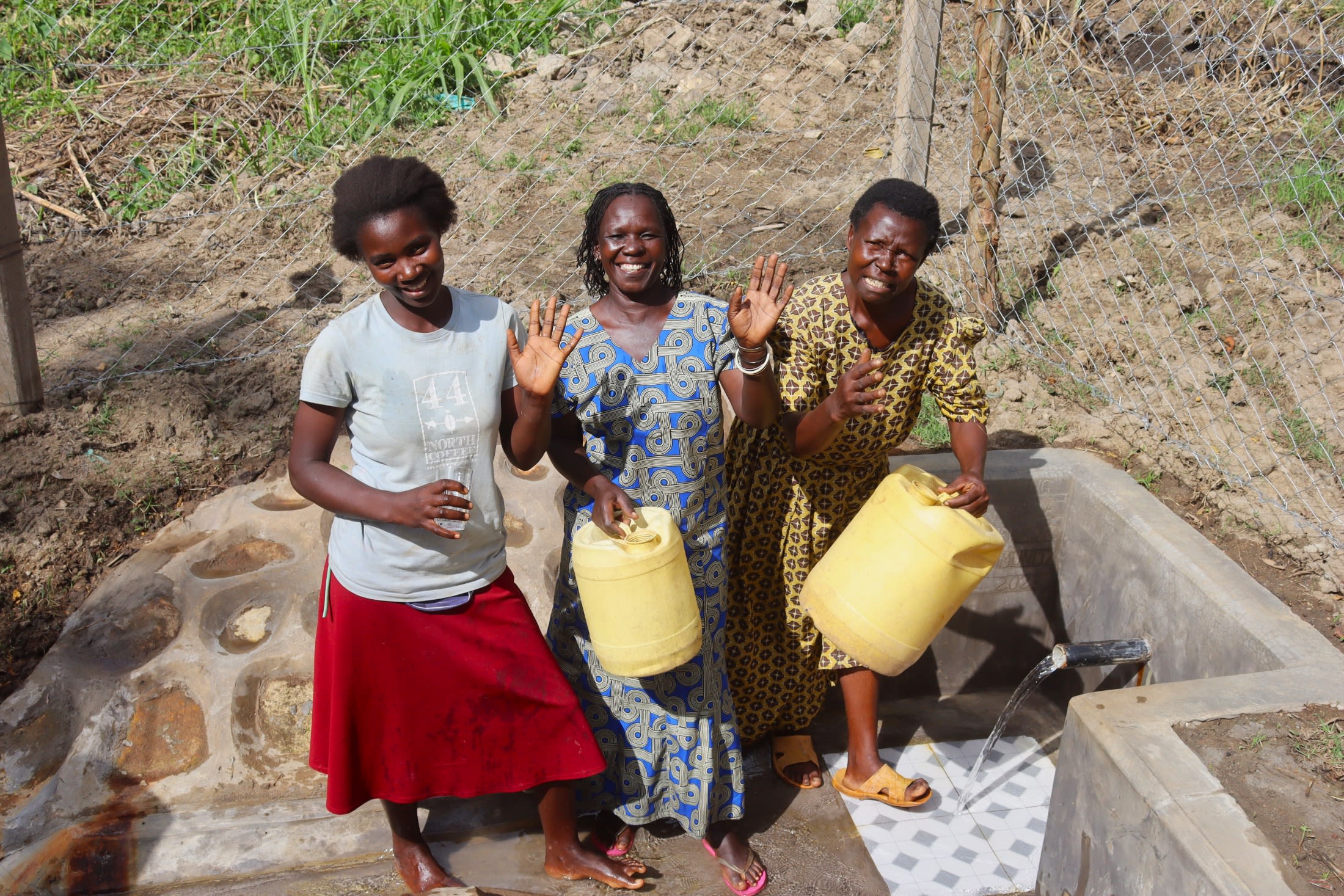The 230 people of Wambani, especially the women and children who carry the brunt of responsibility for collecting water, acutely feel their daily water crisis. Currently, they rely on an unprotected spring, which seems to have had an unsuccessful attempt at protection in the past, to meet their water needs, but it does not function properly and offers contaminated water that is making people sick.
First thing in the morning, people make their way to the spring to wait in long lines to collect water before their daily chores and the school day begins, but the burdensome task leaves them exhausted and makes it difficult to accomplish other things or to concentrate in class. And sadly, for some who were not able to collect sufficient water in the morning, the trip has to be repeated again in the evening.

"Water is a necessity that we cannot live without. Whether it is contaminated, overcrowded, or dangerous, we have to try our best to access it," said 9-year-old Shalene E., shown below collecting water.

Water from this spring is not fit for drinking because the spring water catchment area is not well protected. Dirty water accumulates at the drawing point since there is no drainage channel, there is a major crack in the headwall, and water users have to stand in water as they fetch.
The bushy surroundings of the spring also act as hiding places for snakes and other wild animals that can cause harm. And since the path to the spring does not have stairs, there is also a danger of sliding and falling while carrying water.
"I dread going to the spring alone because there [was] a time a big snake almost bit me. I had to run for my life, but I had to go back to fetch water because my mother needed it for cooking," said Shalene.
"Since the water is contaminated, it causes waterborne illnesses like typhoid, diarrhea, stomachache, and cholera. [And the] stagnant water breeds mosquitoes that cause the spread of malaria to the villagers," said our field officer Christine Masinde.

"Cases of malaria, typhoid, and stomachache are rampant in my family. The little money I earn from the sugar factory is spent on medical bills and buying medicine. This has led to us living a low quality of life. I will be happy if our spring will be protected well so that we can concentrate on personal and family developments," said 46-year-old farmer John Achimba, shown standing in water as he fills his container.
"[I] hope these problems will be resolved soon so that I can enjoy clean and safe water," said Shalene.
We are hopeful that by protecting the community's spring properly, we will be able to make this a reality for Shalene and her fellow community members.
What We Can Do:
Spring Protection
Protecting the spring will help provide access to cleaner and safer water and reduce the time people have to spend to fetch it. Construction will keep surface runoff and other contaminants out of the water. With the community’s high involvement in the process, there should be a good sense of responsibility and ownership for the new clean water source.
Fetching water is a task predominantly carried out by women and young girls. Protecting the spring and offering training and support will, therefore, help empower the female members of the community by freeing up more of their time and energy to engage and invest in income-generating activities and their education.
Training on Health, Hygiene and More
To hold training, we work closely with both community leaders and the local government to approve small groups to attend training. We ask community leaders to invite a select yet representative group of people to attend training who will then act as ambassadors to the rest of the community to share what they learn.
The training will focus on improved hygiene, health, and sanitation habits in this community. With the community’s input, we will identify key leverage points where they can alter their practices at the personal, household, and community levels to affect change. This training will help to ensure participants have the knowledge they need about healthy practices and their importance to make the most of their water point as soon as water is flowing.
Our team of facilitators will use a variety of methods to train community members. Some of these methods include participatory hygiene and sanitation transformation, asset-based community development, group discussions, handouts, and demonstrations at the spring.
One of the most important issues we plan to cover is the handling, storage, and treatment of water. Having a clean water source will be extremely helpful, but it is useless if water gets contaminated by the time it is consumed. We and the community strongly believe that all of these components will work together to improve living standards here, which will help to unlock the potential for these community members to live better, healthier lives.
We will then conduct a small series of follow-up trainings before transitioning to our regularly scheduled support visits throughout the year.
Training will result in the formation of a water user committee, elected by their peers, that will oversee the operations and maintenance of the spring. The committee will enforce proper behavior around the spring and delegate tasks that will help preserve the site, such as building a fence and digging proper drainage channels. The fence will keep out destructive animals and unwanted waste, and the drainage will keep the area’s mosquito population at a minimum.

 Protected Spring
Protected Spring
 Rehabilitation Project
Rehabilitation Project










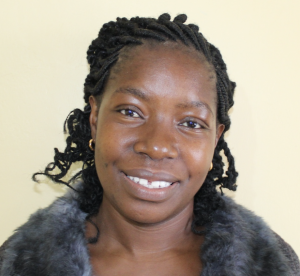





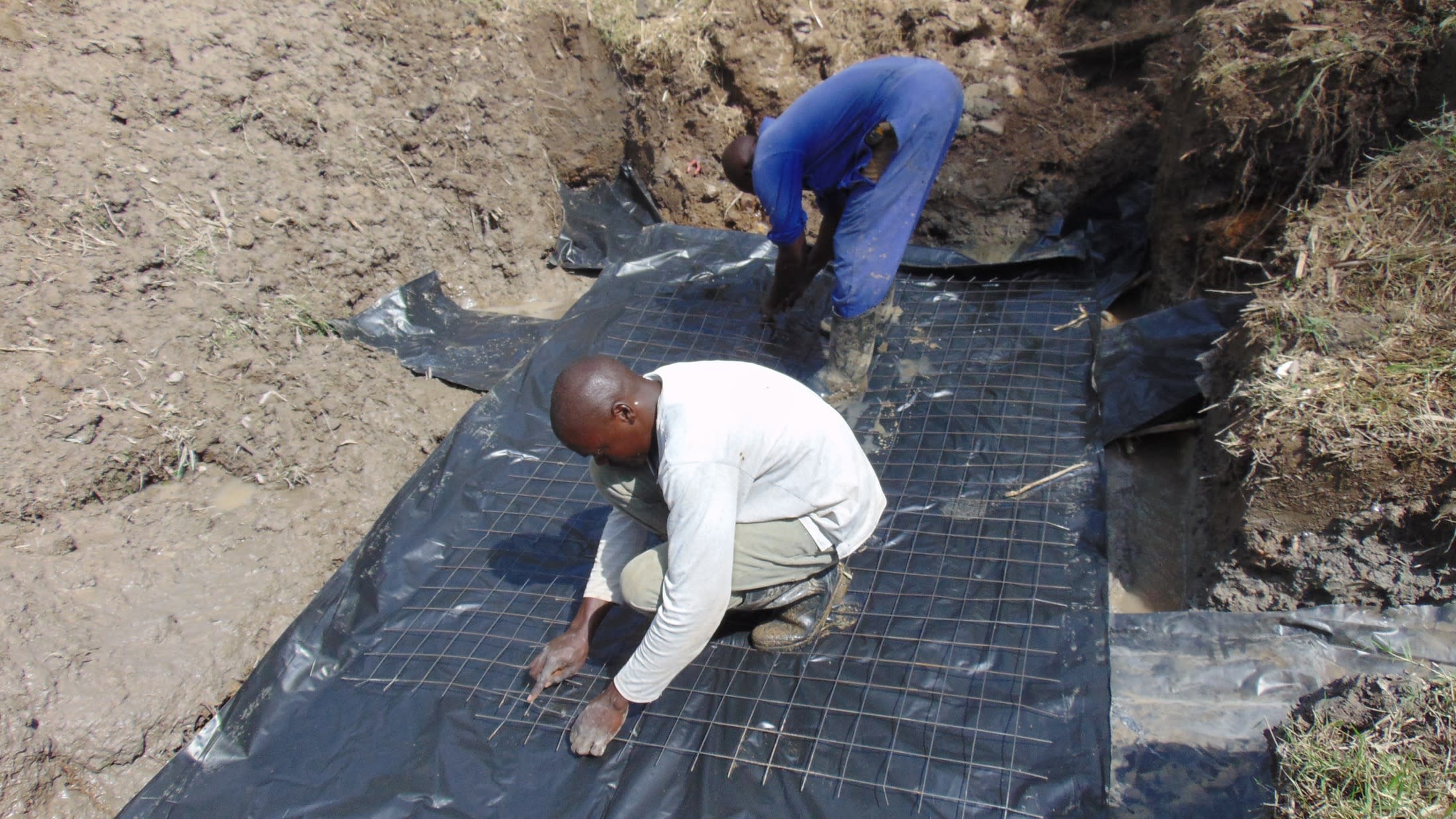
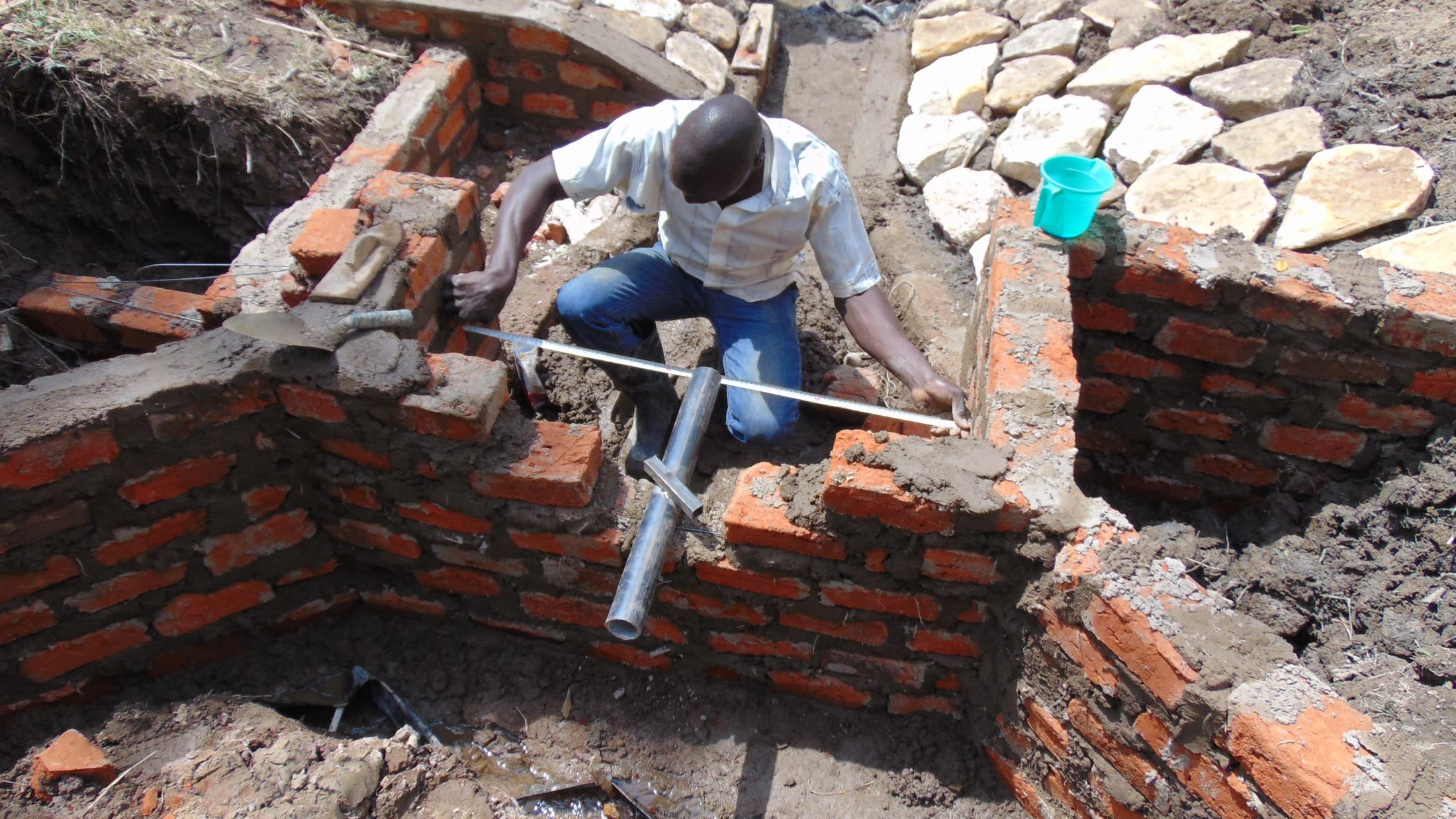 If we place the discharge pipe too high above the spring's eye, back pressure could force water to emerge elsewhere. Too low, and community members would not be able to access the water easily. We embedded the pipe using clay (or mortar when the clay is in short supply) and placed it at an incline to ensure water flows in the right direction.
If we place the discharge pipe too high above the spring's eye, back pressure could force water to emerge elsewhere. Too low, and community members would not be able to access the water easily. We embedded the pipe using clay (or mortar when the clay is in short supply) and placed it at an incline to ensure water flows in the right direction.
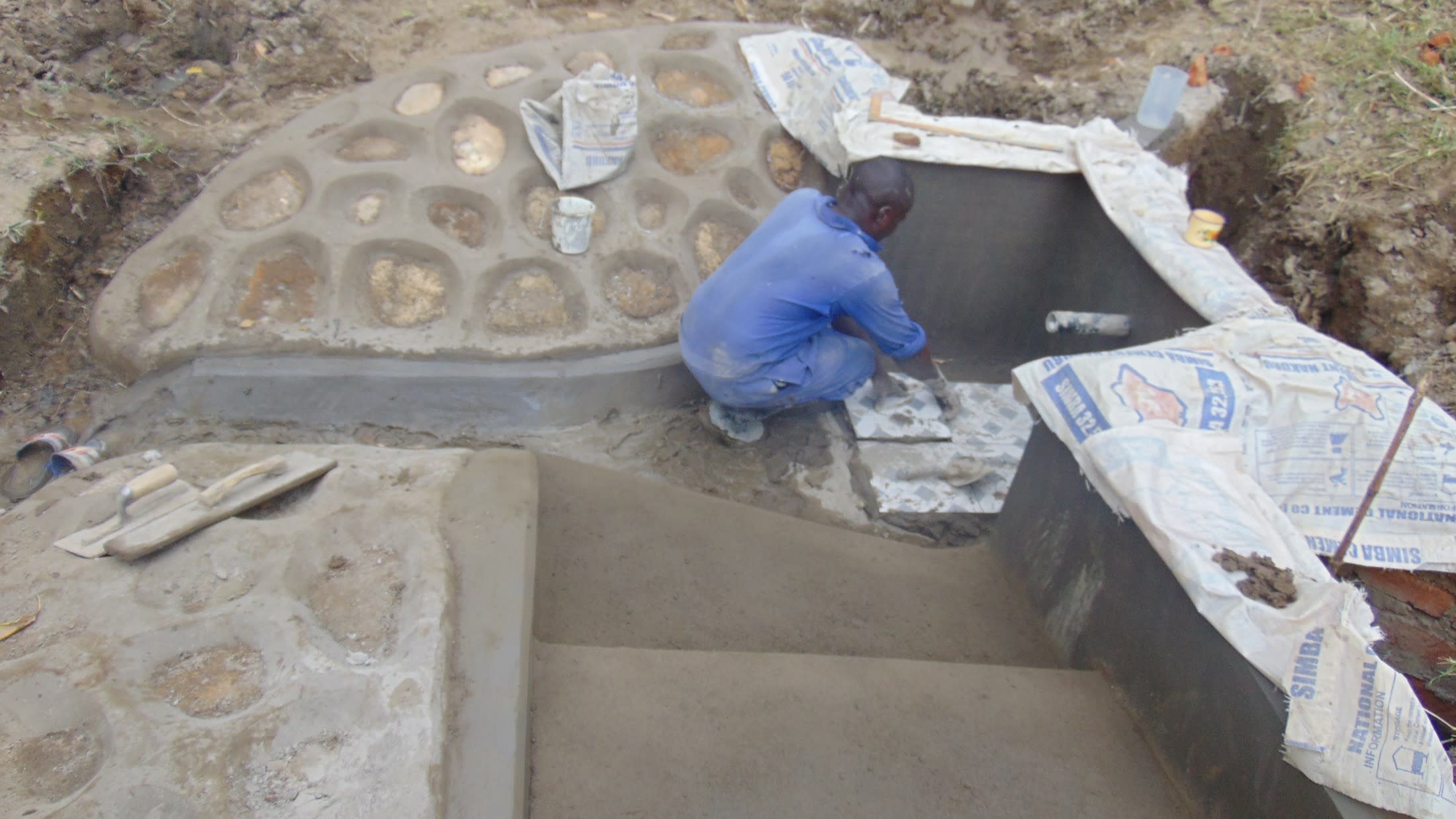 The final stage of construction is backfilling the reservoir box behind the discharge pipe. We cleared the collection box of any debris that may have fallen during construction. Then we redirected the temporary diversion channels back into the reservoir box, channeling water into this area for the first time. We close all other exits to force water through only the discharge pipe.
The final stage of construction is backfilling the reservoir box behind the discharge pipe. We cleared the collection box of any debris that may have fallen during construction. Then we redirected the temporary diversion channels back into the reservoir box, channeling water into this area for the first time. We close all other exits to force water through only the discharge pipe. Community members transplanted grass onto the backfilled soil to help prevent erosion. The collection area was fenced to discourage any person or animal from walking on it. Compaction can lead to disturbances in the backfill layers and potentially compromise water quality.
Community members transplanted grass onto the backfilled soil to help prevent erosion. The collection area was fenced to discourage any person or animal from walking on it. Compaction can lead to disturbances in the backfill layers and potentially compromise water quality.
 We covered several topics, including community participation in the project, leadership and governance, personal and environmental hygiene, water handling and treatment, spring maintenance, dental hygiene, the ten steps of handwashing, disease prevention, and how to make and use handwashing stations.
We covered several topics, including community participation in the project, leadership and governance, personal and environmental hygiene, water handling and treatment, spring maintenance, dental hygiene, the ten steps of handwashing, disease prevention, and how to make and use handwashing stations.

